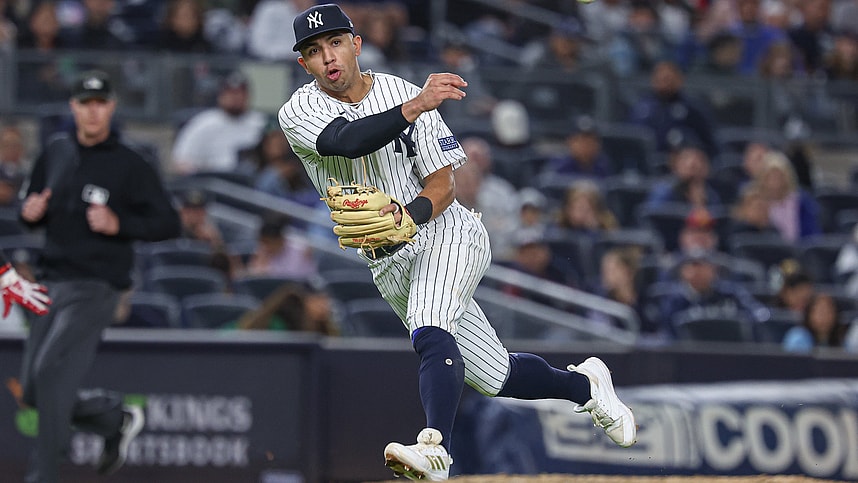
While many are engrossed in the New York Yankees‘ outfield situation, and the potential acquisition of superstar slugger Juan Soto, a glaring vacancy at third base remains.
The front office released Josh Donaldson towards the end of the season. He subsequently joined the Milwaukee Brewers in their playoff pursuit. Sadly for Donaldson, the Brewers’ postseason journey was cut short.
With Donaldson’s exit, the Yankees face a void they need to address. The team could opt for an experienced veteran, nurture a budding prospect, or delve into free agency, using financial might to remedy the problem.
Three Solutions to the Yankees’ Third Base Problem:
1.) Starting Oswald Peraza
The immediate contender for this spot is Oswald Peraza, a 23-year-old infielder who featured in 52 games for the Yankees last season. He averaged .191 with a .267 OBP, accompanied by two home runs, 14 RBIs, a 26.2% strikeout rate, a 6.8% walk rate, and a 53 wRC+.
While Peraza is still honing his offensive prowess, he boasts a Gold Glove-level defensive skill set, making him a fitting candidate for the third base. If the Yankees can afford him some patience to sharpen his batting, he could very well seal the position.
September was Peraza’s most fruitful month; he managed a .250 average, a .283 OBP, and a .398 slugging rate. As he matures, his discipline and on-base rate should naturally increase.
Adding a luminary like Soto to the lineup provides the Yankees with the liberty to patiently groom their prospects at the major league level without pressing for instant results.
On the defensive front, Peraza logged 300 innings at third base, achieving a .964 fielding percentage, committing three errors, and attaining one out above average. His performance earmarks him as an above-par defender, poised to further enhance his skills with experience.
2.) Deploying DJ LeMahieu
Another alternative lies in veteran DJ LeMahieu. Aged 35, LeMahieu rallied in the latter half of the season, especially post the All-Star break, recording a .273 average and a .377 OBP and smashing eight home runs in 220 at-bats.
At third base, LeMahieu clocked 592.2 innings, boasting a stellar .994 fielding percentage. He also contributed three defensive runs saved and three outs above average. By transitioning him to third base full-time and moving Peraza to a regular utility role, the Yankees can extract considerable value. They can also occasionally switch LeMahieu to first base and Peraza to third, thereby tapping into the strengths of both players.
3.) Signing Jeimer Candelario
Free agency also offers potential solutions. Jeimer Candelario, 29, emerges as a prominent choice, having been associated with the Yankees during the past August trade deadline.
The ambidextrous hitter concluded a commendable season with a .251 average, a .336 OBP, a .471 slugging rate, 22 home runs, 70 RBIs, and a 117 wRC+. His batting prowess would enrich the Yankees’ lineup from third base.
On the defensive front, Candelario played 994 innings, securing a .971 fielding percentage. However, his -5 defensive runs saved indicate room for improvement. Given his decent defensive skills and historically slightly above-average offensive contributions, he might not command an exorbitant price.
In essence, if the Yankees are setting their sights on big-ticket acquisitions like Soto and a premier starting pitcher, their budget constraints might push them toward a cost-effective solution for third base. While Candelario was a sensible choice during his low-cost arbitration period, he doesn’t overshadow LeMahieu or the potential of Peraza.
More about: New York Yankees